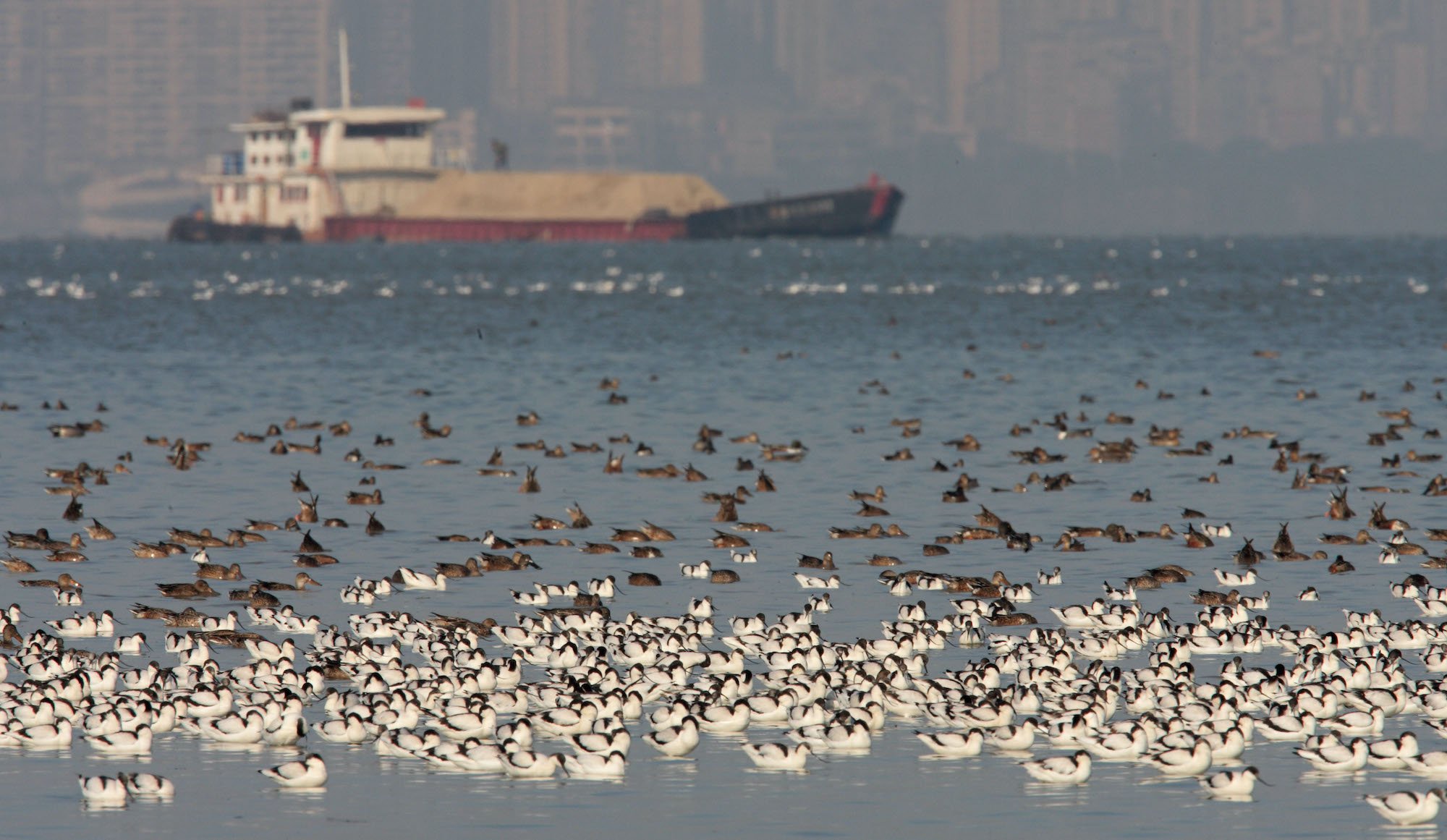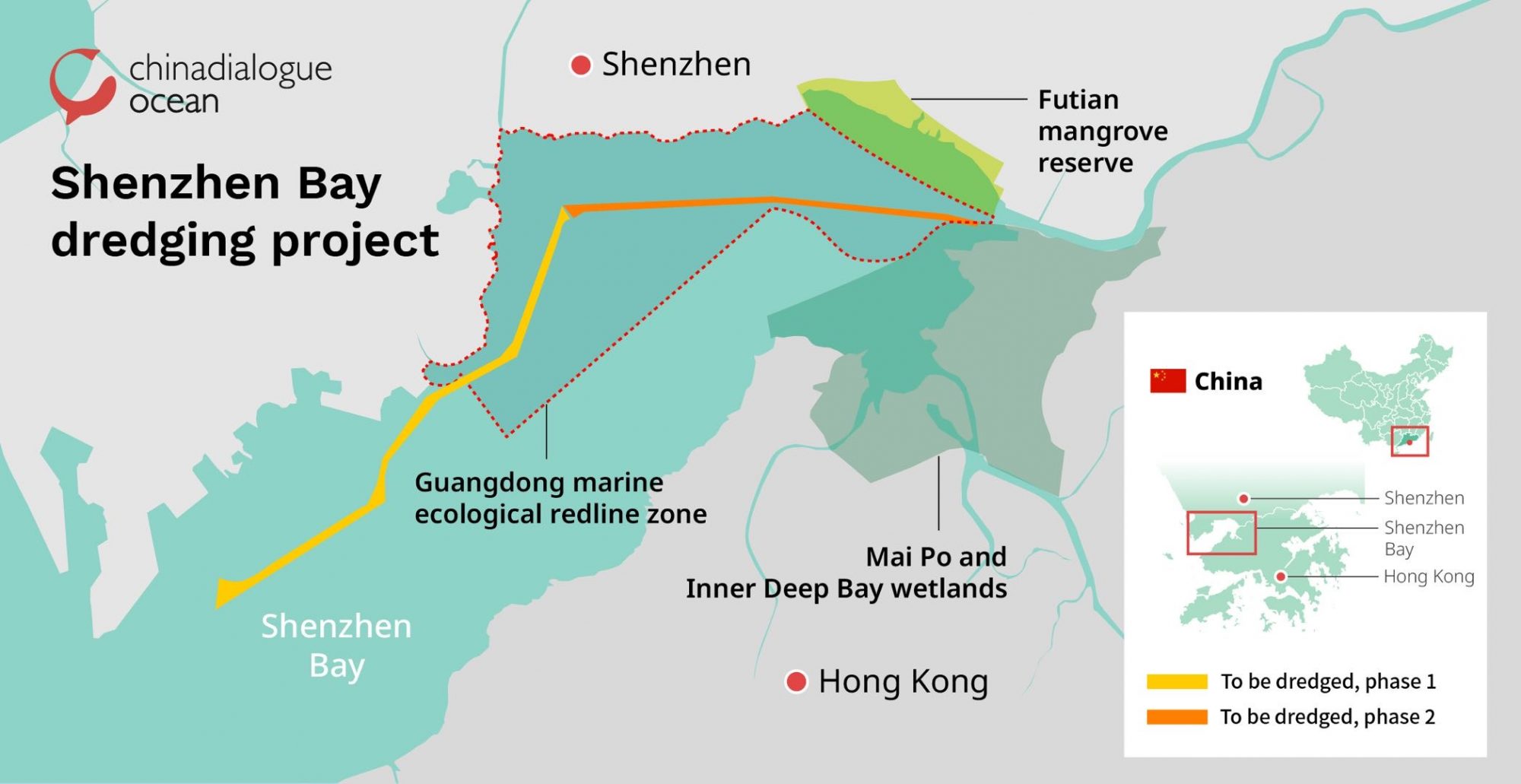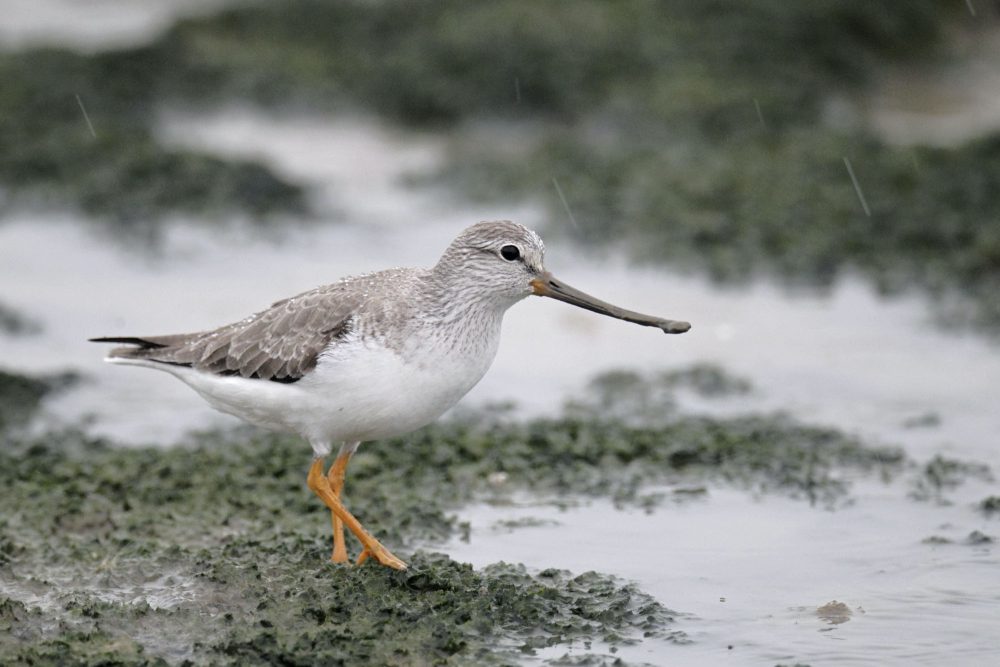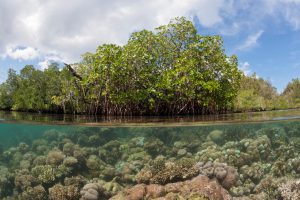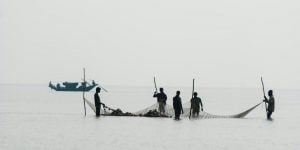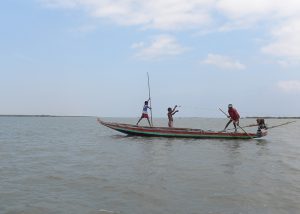In late March, a case of plagiarism brought the chaotic state of China’s environmental impact assessment system to public attention. But the debate largely overlooked a related and equally important matter: the questionable binding power of ecological redlines, a system the central government has hailed as “unbreachable” and as “fortifying the foundations for the sustainable development of the Chinese nation”.
Plagiarism – and ignoring redlines
The environmental impact assessment (EIA) for a 110 million yuan (US$16 million) dredging project in Shenzhen Bay, was commissioned by Shenzhen Shipping Channels Centre and carried out by the Chinese Academy of Sciences’ South China Sea Institute of Oceanology. The report was published online for public consultation, but careful readers noted that some sections were identical to an earlier report on the dredging of another channel in Zhanjiang port, also in Guangdong province. Even the word “Zhanjiang” appeared repeatedly. This caused outrage. On 15 April, the Ministry of Ecology and Environment described the case as “particularly grave” and said an investigation had been ordered.
The northern half of Shenzhen Bay belongs to Shenzhen and the southern half to Hong Kong. The bay’s extensive mangrove forests are a stopping-off point for northern migratory birds. Tens of thousands arrive in spring and winter. The Shenzhen side of the bay is home to the Futian mangrove national nature reserve, and most of the rest of the Shenzhen side is covered by Guangdong’s marine ecological redlines. This means no environmentally destructive activities, such as land reclamation, sand mining or release of pollutants, should be permitted.
Yet the EIA in this case gave the green light to a dredging programme that would have cut through those redlines. As part of the “Shenzhen from the Sea” tourism initiative, a channel 17km long, 120m wide and 3.1m deep was to be cleared. Second phase plans would see the channel extended right across the bay, to within only 200m of Hong Kong’s Mai Po and Inner Deep Bay wetlands.
This would bring irreversible changes to the seabed and represent a major threat to marine and coastal ecologies and food chains, including mangrove forests, migratory bird habitats, seabed organisms, fish and even the Indo-Pacific humpbacked dolphin.
Chu Jun of the Cross-border Environmental Concern Association (CECA) says that the issues reflect the chaotic state of the EIA sector and broader problems with the ecological redline system that are being overlooked.
On 25 March, Shenzhen’s transportation authorities responded to the scandal via a Sina microblog: “The site of Phase 1 of the proposed Shenzhen dredging programme is not within Guangdong’s marine redlines.” But after consulting its database, CECA issued a public rebuttal: the project would cross “Guangdong marine redline zone 166” and approach both zones 167 and 168.
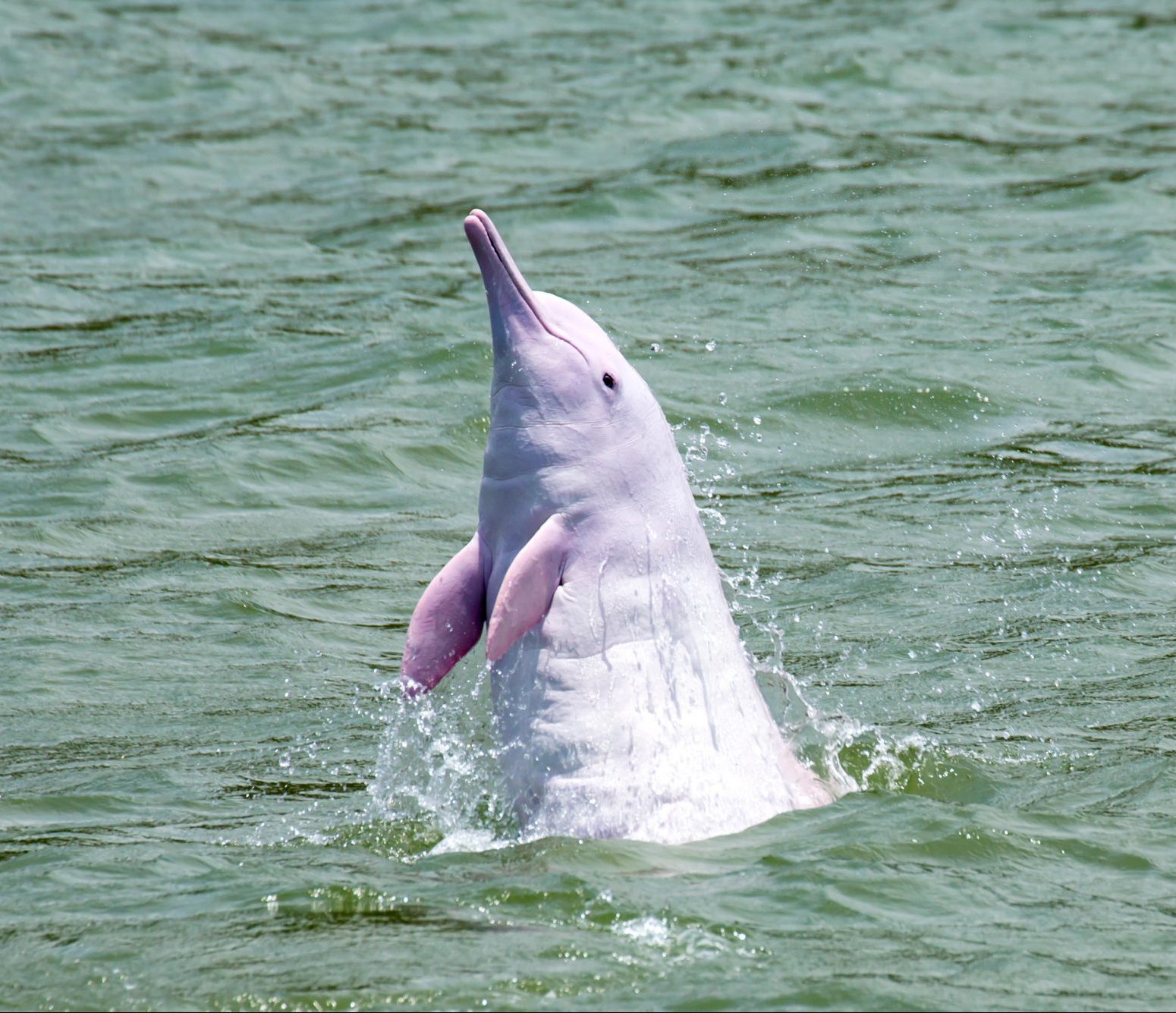
Even without CECA’s pointed rebuttal, the EIA report itself marks out the 11 redlines and protected areas the project will cross, complete with measures for managing this process. In a chapter on the impact on marine redline zones, it states that these areas include Shenzhen Bay’s important coastal wetlands (zone 166), the nearby Zhuhai Indo-Pacific Humpback Dolphin Reserve (zone 164) and Shenzhen Bay mangrove forests (zone 168).
But the report concludes the project will have “little” or “next to no impact” on these redline zones and meets the requirements of Guangdong’s regulations on marine redline zones.
An advanced but awkward institution
The redline system sits awkwardly within China’s environmental protection regime.
Trials started in the Yangtze basin in 2000 and the system was written into State Council environmental protection documents in 2011, with redlines to be drawn for ecologically sensitive and vulnerable areas both on land and at sea.
The State Oceanic Administration (SOA) was placed in charge of setting marine redlines. In 2012, it announced its first trial of the system, in the Bohai Sea. In 2013, Shandong became the first province to take part, designating 40% of the Bohai under its jurisdiction as falling within redline zones. All 11 of China’s coastal provinces have now set marine redlines, covering 30% of coastal waters and 37% of the coastline.
In official documentation marine ecological redline zones are defined as “areas with particularly important marine ecological functions, requiring strict management and mandatory protection.” They are akin to an easily erected cordon that can protect the most important and vulnerable sea areas and coastlines, and the rare animals and habitats within, setting a clear geographical scope for more targeted management and reinstatement in the future.
But like most innovations, they are a work in progress.
China has long managed land and sea separately – causing problems for managing coastal waters. Many environmental conflicts occur along the coast, but prior to a ministerial restructuring in 2018 both the SOA and the Ministry of Land and Resources (MLR) could claim jurisdiction here. This made setting and implementing marine redlines problematic.
Chu Jun is well aware of this: “It’s often hard to decide where the line between the land and coastal waters is. For example, if we want to exercise oversight or run a project, it can be hard to find authorities to deal with. The two sides (marine and land) either pass the buck, or both claim jurisdiction.”
In 2018, the SOA and the MLR merged to become the Ministry of Natural Resources, helping resolve those issues to some degree. But further improvements are needed for genuinely integrated management, clarification of rights and responsibilities, and coordinated planning across land and sea.
There are two types of marine redline zone – those where development is banned outright, and those where it is restricted. But there is no operable law to rely on when enforcing those protections. The closest mention was a principle included in the 2017 revision of the Marine Environmental Protection Law: “Establish marine ecological redlines in zones of key ecological functions and ecologically sensitive and vulnerable zones, and implement strict protections.”
Wang Canfa, a professor at the China University of Politics and Law and an expert on environmental law, told China Dialogue the existing policy framework provides a technical basis for creating marine redlines but not for resolving implementation issues. Implementation is made difficult by a lack of clarity over both responsibilities and punitive provisions.
“What do you do in the long term once you’ve drawn your redlines?” asked Wang. “What can you actually do and not do within those areas? Most central and local government measures and guidelines aren’t clear enough and lack a unified standard.”
The plight of the bahaba
The marine redline system is struggling. As the Shenzhen scandal was breaking, another Guangdong project – a railway line from Shenzhen to Maoming – was set to cross four redline zones including one covering the Donghuang Chinese Bahaba Reserve.
The Chinese bahaba is a Schedule II protected animal, listed as critically endangered by the IUCN, and the Donghuang reserve protects its only known spawning ground. The noise and vibration from the proposed tunnel under the Pearl River would inevitably cause irreparable damage to that spawning ground and those habitats.
The location is protected both as a nature reserve and as an ecological redline zone. But in the final EIA the tunnel was still set to cross the redline zone, although there had been an alternative route avoiding the zone, at an extra cost of 170 million yuan (US$24 million).
Chu Jun says such cases of encroachment on redline zones are common, and often go unchecked and unpunished. Infrastructure such as high-speed rail lines, high-voltage power lines and mobile network base stations are the most common culprits. It can also be hard to determine if some activities, such as fishing, breach regulations. Fishing on a small scale is important for local livelihoods and permitted, but there is debate over permitting aquaculture.
The redline system has provided only limited guidance for marine environmental protection. According to Chu Jun, it has been less effective than a 2018 State Council order protecting coastal wetlands by cracking down on land reclamation. She recalls how that order resulted in an immediate halt to land reclamation around the country.
“And not every case gets the debate and public attention Shenzhen Bay did. If the redline system is going to provide effective restrictions, we need to start by improving policy,” Chu said.
All status and no legislation
In fact, the government has been consolidating the redline system since 2017, alongside giving it higher status.
In January 2017, the offices of the State Council and the Party Central Committee published views on drawing and guarding ecological redlines, including marine redlines, and calling for the drawing up of ecological redlines to be completed nationwide by the end of 2020. That the document was issued by these two high-ranking bodies was seen as an attempt to break through ministerial borders.
So far, 15 provinces have had their proposed redlines approved by the State Council. CECA understands that the coastal provinces within those 15 have incorporated their original marine ecological redlines into their new redline zones.
There needs to be specific consequences for breaching the redlines. That’s the improvement we need.
In November 2019, the offices of the State Council and the Party Central Committee issued guidance on three controlling mechanisms in nationwide spatial planning, called “three control lines”, the first of which is ecological redlines, alongside limits to farmland loss and boundaries to urban expansion. They are deemed as “unbreachable redlines” to adjust the economic structure, plan industrial development and promote urbanisation, “fortifying the foundations for the sustainable development of the Chinese nation”. As well as making coordinated management across land and ocean a basic principle, it also made “protection first, ecology first” an overarching principle of the redlines, ensuring the integrity of ecological functions.
At an MLR press conference on the above, an official from the ministry’s planning bureau admitted “there has been no national management system for the ecological redlines or clarification on what activities are permissible within redlines, leading to differences in understanding on how redlines are set and managed.” The official also pointed out the new document listed eight activities permissible with restrictions within redlines, and said this would help reduce disagreements. Worth noting is that “appropriate tourism which does not damage ecological functions, and construction of necessary public infrastructure” is listed as permitted. If the Shenzhen Bay dredging project hadn’t been halted due to the plagiarism, would this have allowed it to go ahead, given the “little” or “next to no impact” the report concluded it would have? There has been no official answer.
Wang Canfa thinks that despite being the focus of environmental protection work in recent years, the redline system still needs to be toughened up. “Initially we understood these redlines would be like those for arable land – a line you absolutely cannot cross. That doesn’t seem to be the case,” he said. “It looks like development is banned in principle, rather than completely, with a strict ban on development not in line with the area’s ecological functions. These principles will be hard to apply in practice.”
Wang would like to see appropriate laws passed, telling China Dialogue: “Any redline needs specific legislation. There needs to be specific consequences for breaching the redlines, and I think that’s the next improvement we need.”
